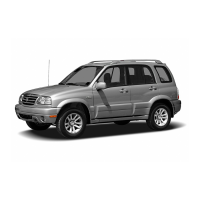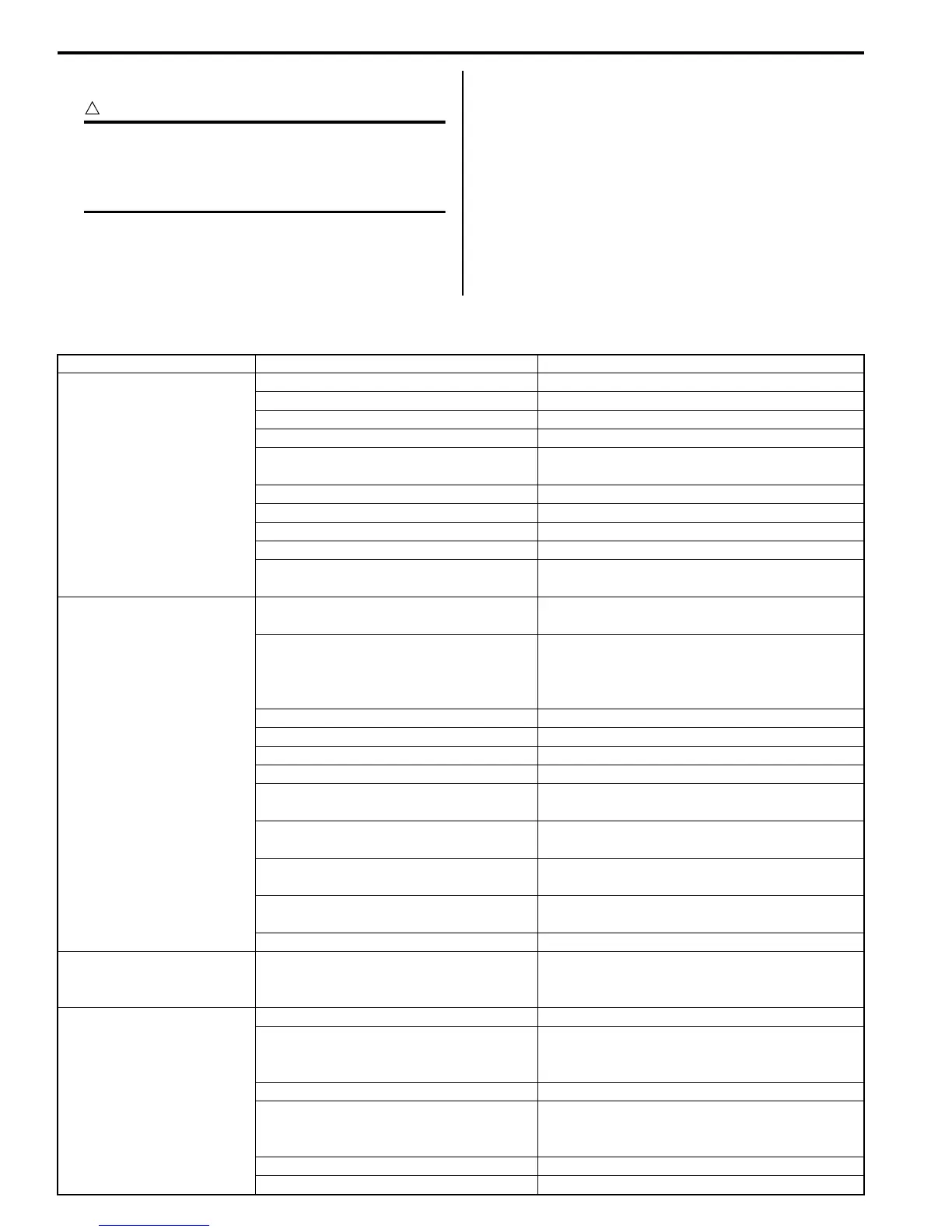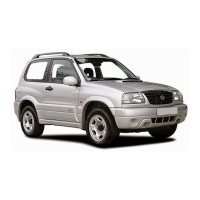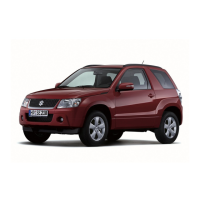4A-5 Brake Control System and Diagnosis:
Substandard or contaminated brake fluid
CAUTION
!
Improper brake fluid, mineral oil or water in
the fluid may cause the brake fluid to boil or
the rubber components in the hydraulic
system to deteriorate.
If primary piston cups are swollen, then rubber parts
have deteriorated. The deterioration may also be
evidenced by swollen wheel cylinder piston cups on the
drum brake wheel.
If deterioration of rubber is evident, disassemble all
hydraulic parts and wash with alcohol. Dry these parts
with compressed air before assembly to keep alcohol out
of the system. Replace all rubber parts in the system,
including hoses. Also, when working on the brake
mechanisms, check for fluid on the linings. If excessive
fluid is found, replace the linings.
The system must be flushed if there is any doubt as to
the grade of fluid in the system or if fluid has been used
which contained parts that have been subjected to
contaminated fluid.
Brakes Symptom Diagnosis
S5JB0A4104002
Condition Possible cause Correction / Reference Item
Not enough braking force Brake fluid leakage from brake lines Locate leaking point and repair.
Brake disc or pads stained with fluid Clean or replace.
Overheated brakes Determine cause and repair.
Poor contact of shoes on brake drum Repair for proper contact.
Brake shoes linings stained with fluid or
wet with water
Replace.
Badly worn brake shoe linings Replace.
Defective wheel cylinders Repair or replace.
Malfunctioning caliper assembly Repair or replace.
Air in system Bleed system.
Malfunctioning ABS (Antilock brake
system), if equipped
Check system and replace as necessary.
Brake pull
(Brakes not working in
unison)
Pad or shoe linings are wet with water or
stained with fluid in some brakes
Replace.
Drum-to-shoe clearance out of
adjustment in some brakes.
(malfunctioning auto adjusting
mechanism)
Check for inoperative auto adjusting
mechanism.
Drum is out of round in some brakes Replace.
Wheel tires are inflated unequally Inflate equally.
Malfunctioning wheel cylinders Repair or replace.
Disturbed front end alignment Adjust as prescribed.
Unmatched tires on same axle Tires with approximately the same amount of
tread should be used on the same axle.
Restricted brake pipes or hoses Check for soft hoses and damaged lines.
Replace with new hoses and new brake piping.
Malfunctioning caliper assembly Check for stuck or sluggish pistons and proper
lubrication of caliper slide bush.
Loose suspension parts Caliper should slide. Check all suspension
mountings.
Loose calipers Check and torque bolts to specifications.
Brake locked
(For vehicles equipped
with ABS)
Malfunctioning ABS, if equipped Check system and replace as necessary.
Excessive pedal travel
(Pedal stroke too large)
Partial brake system failure Check brake systems and repair as necessary.
Insufficient fluid in master cylinder
reservoirs
Fill reservoirs with approved brake fluid. Check
for leaks and air in brake systems. Check
warning light. Bleed system if required.
Air in system (pedal soft / spongy) Bleed system.
Rear brake system not adjusted
(malfunctioning auto adjusting
mechanism)
Repair auto adjusting mechanism. Adjust rear
brakes.
Bent brake shoes Replace brake shoes.
Worn rear brake shoes Replace brake shoes.

